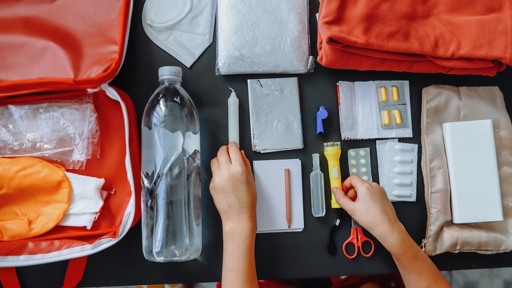Many Americans remain dangerously unprepared for floods, fires, and other natural catastrophes, and their level of readiness is strongly shaped by factors like age, gender, employment status, and past experience with disasters.
Climate-driven calamities are becoming more frequent and severe, as shown by last month’s devastating floods in Texas. Twenty-eight disasters nationwide caused $93 billion in damage in 2023 — a price tag the country has exceeded in the first half of 2025. Yet more than 70% of Americans lack a detailed safety plan.
A study published last month in Public Health Reports provides some insight into who those people are. Researchers surveyed nearly 3,000 adults in the United States and found that those who previously experienced a natural disaster were more likely to have emergency supplies and evacuation plans in place. Men and those with jobs more often said they were prepared, while women and unemployed people often were not. Importantly, adults over 55 were 63% more likely to say they knew how to stay safe and access emergency information.
That finding was striking in part because older adults often comprise the majority of victims when disasters hit, said Lori Peek, director of the Natural Hazards Center at the University of Colorado-Boulder. “Older adults are saying they know what to do, they understand what to do. But then there’s an additional body of research on specific disaster events showing the older adults are actually, in many ways, the ones most at risk to death, injury and other forms of harm,” she said.
The study also found political affiliation plays a role in how someone might respond in a crisis, with Democrats expressing greater confidence in their ability to access emergency information. “This raises questions about whether this finding relates more to a lack of knowledge or to a lack of trust in information sources, and we encourage future research on this given its implications for messaging in disaster preparedness and response efforts,” said Christine Crudo Blackburn, the lead author of the study conducted by Texas A&M University.
People who have experienced a disaster were more than three times as likely to have an evacuation plan, and more than twice as likely to have an emergency kit. That preparedness might not extend to those who narrowly avoid being hit by, say, a hurricane, said Jennifer Horney, a disaster epidemiologist at the University of Delaware. She calls this the false expectations paradox: If someone is told to evacuate, and then the hurricane doesn’t come, they’re more likely to ignore official warnings next time.
“There’s been a good bit of research on people trusting messages from friends and family over authorities,” she said. “So in terms of making an evacuation decision, people will end up doing what their friends and neighbors are doing,” Horney said. During Hurricane Harvey, people trusted their neighborhood Facebook groups – but didn’t necessarily heed government warnings, she said.
Blackburn’s findings raise urgent questions about how local authorities, public health officials, and federal agencies can more effectively communicate and build trust, particularly among populations that are less likely to prepare. Individual readiness only goes so far without governmental or agency intervention. “These intense storms require agency and organizational and governmental preparedness,” Horney said. “It’s not just one person or one family.”
The challenge is, the agencies doing that work tend to be underfunded, with high turnover, said Samantha Montano, an associate professor of emergency management at Massachusetts Maritime Academy. Her book Disasterology chronicles the nation’s inadequate preparation for climate disasters. “Most local emergency management agencies, if they’re doing preparedness, are doing things like posting information about how to make an emergency kit on their website. Maybe they’re handing out flyers or pamphlets at a local farmer’s market. If you’re lucky, they’re partnered with the local schools and send something home in the mail with the kids.”
Still, local emergency managers understand they aren’t reaching everyone, said David Abramson, who studies disaster response at New York University’s School of Global Public Health. “They know that they’ve got to figure out ways to reach people, and I think in the past, the answer has been using their networks of community based providers to reach out to particularly vulnerable groups and populations,” he said.
One way they might bridge the political divide is by enlisting local Republican party officials to assist in reaching their own community, he said. Such thinking, and data from studies like the one Blackburn led, can lead to other effective solutions — like working on disaster preparedness in schools, or engaging other community groups.
“My hope is that our data can be useful to the people on the ground who are helping communities and individuals prepare for disasters,” said Blackburn. “By understanding how individuals prepare, we can actually tailor policies to the needs of people.
Grist has a comprehensive guide to help you stay ready and informed before, during, and after a disaster.
Explore the full Disaster 101 resource guide for more on your rights and options when disaster hits.
Are you affected by the flooding in Texas and North Carolina?Learn how to navigate disaster relief and response.
Get prepared. Learn how to be ready for a disaster before you’re affected.
This story was originally published by Grist with the headline Floods, fires and false confidence: America’s disaster problem is personal on Aug 1, 2025.
From Grist via this RSS feed


